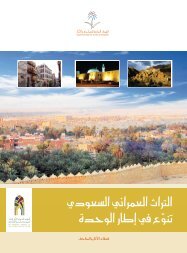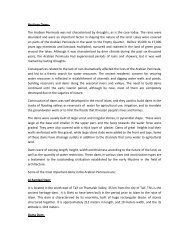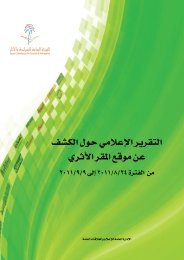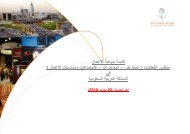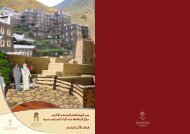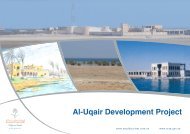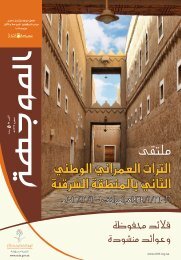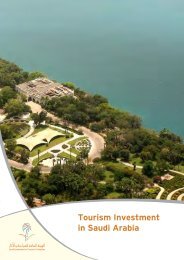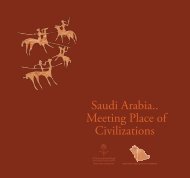Roads of Arabia
Roads of Arabia
Roads of Arabia
Create successful ePaper yourself
Turn your PDF publications into a flip-book with our unique Google optimized e-Paper software.
09 Arabie US p136-157_CM_BAT.qxd 23/06/10 21:32 Page 138<br />
THE PREHISTORIC<br />
POPULATIONS<br />
Marie-Louise Inizan<br />
The Kingdom <strong>of</strong> Saudi <strong>Arabia</strong>, with its deserts – the Nafud in the north and the Rub’ al-<br />
Khali, the largest expanse <strong>of</strong> sand in the world, in the south – was long thought to be a land<br />
where no form <strong>of</strong> life had ever been sustainable. As a result, there was no point in attempting<br />
to trace the history <strong>of</strong> its remote prehistoric past.<br />
Nowadays, however, the country is seen as occupying a unique geographical position,<br />
for just beyond the Red Sea on its western border lies East Africa, the recognized cradle <strong>of</strong><br />
humanity. Recent discoveries have shown that only a single species <strong>of</strong> the genus Homo<br />
(Homo erectus) left East Africa for Eurasia approximately two million years ago, and this has<br />
spurred renewed interest in the routes our very distant ancestors took to journey out <strong>of</strong><br />
Africa and conquer the planet Earth.<br />
(preceding pages)<br />
Hijaz landscape,<br />
photographs by Humberto da Silveira<br />
(opposite)<br />
Prehistoric tools<br />
For a long time, there was one predominant scenario: a land route along the Nile.<br />
However, in the last few years, another scenario has arisen involving the <strong>Arabia</strong>n Peninsula<br />
(fig. 1). Could <strong>Arabia</strong> be a geographical bridge between East Africa and Asia, separated as<br />
it is from the former only by the Red Sea? East Africa, as we know, is also considered the<br />
cradle <strong>of</strong> modern humans, Homo sapiens, who emerged roughly two hundred thousand years<br />
ago, and Homo sapiens may have also migrated to Eurasia across the Red Sea. Finally, a mystery<br />
enshrouds the entire <strong>Arabia</strong>n Peninsula: what happened during the Upper Palaeolithic<br />
(40,000 to 12,000 years ago)? No prehistoric site has ever been found from that period,<br />
either on land or under water.<br />
Starting with the last warming period, however, which corresponds to the “<strong>Arabia</strong>n<br />
Humid Period” approximately 10,000 to 12,000 years ago, things start to change: archaeological<br />
exploration and better-preserved artefacts have enabled us to identify the presence <strong>of</strong><br />
original indigenous cultures across the entire <strong>Arabia</strong>n Peninsula. And the discovery <strong>of</strong> rock<br />
art – a continuous practice whose earliest specimens go back at least 8 or 9,000 years – provides<br />
us with a valuable symbolic and aesthetic resource for exploring the long history <strong>of</strong> the<br />
nomadic peoples <strong>of</strong> <strong>Arabia</strong>.<br />
139



